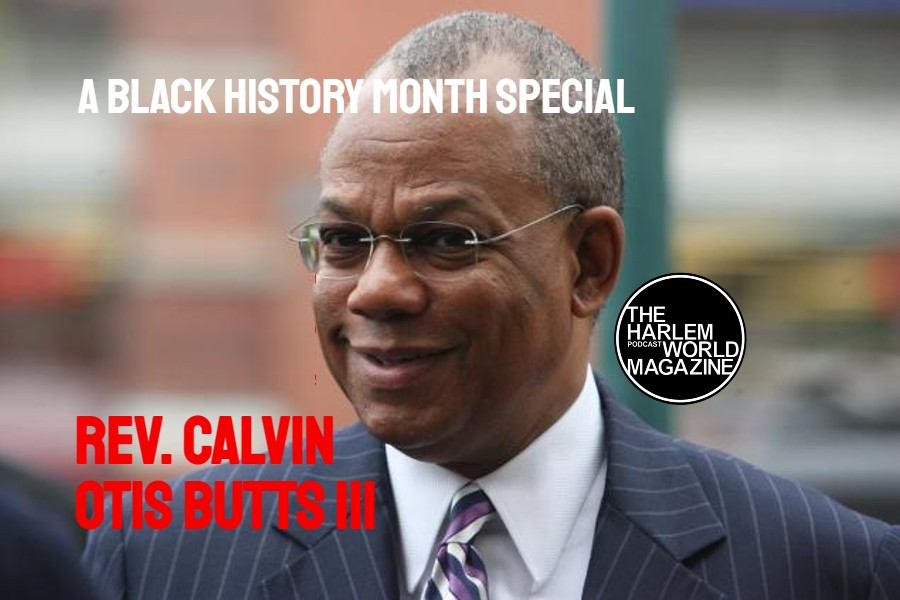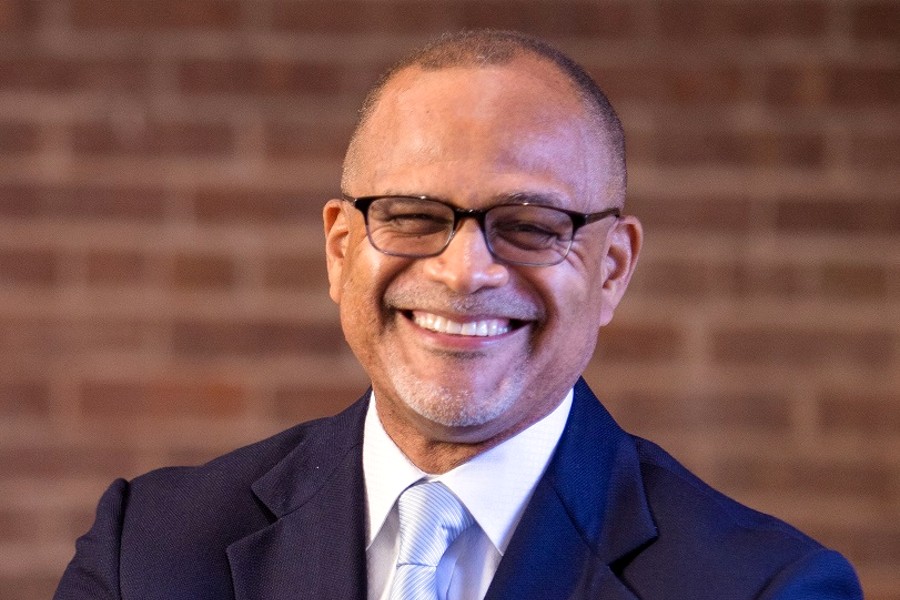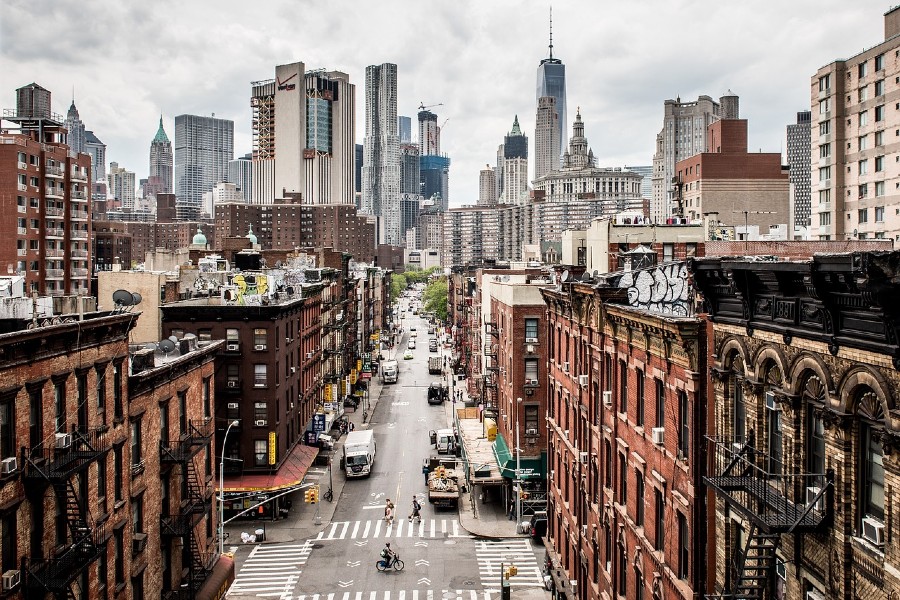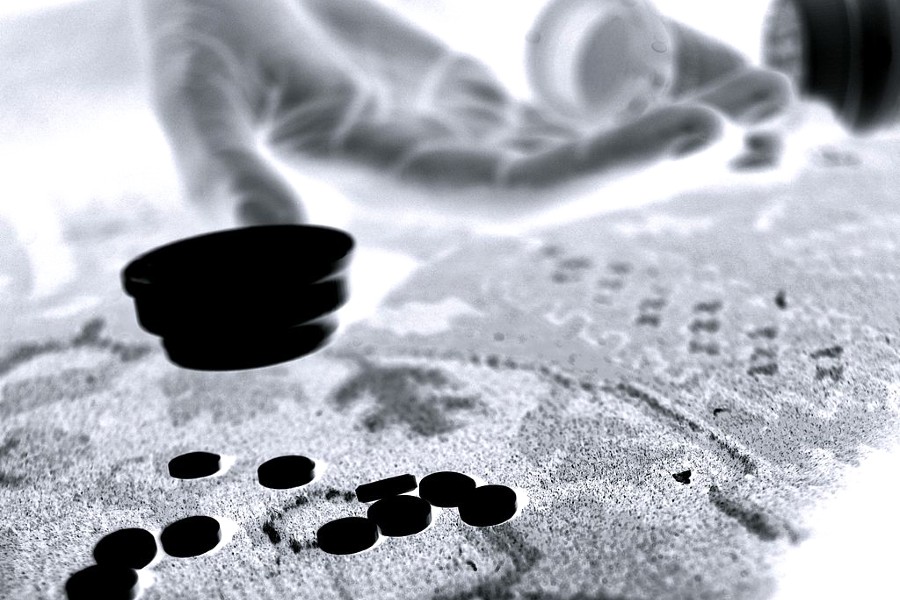
Langston Hughes was born in Joplin, Missouri, the second child of school teacher Carrie (Caroline) Mercer Langston and her husband James Nathaniel Hughes (1871-1934). Both parents were mixed-race, and Langston Hughes was of African American, European American and Native American descent. He grew up in a series of Midwestern small towns. Both his paternal great-grandmothers were African American, and both his paternal great-grandfathers were white: one of Scottish and one of Jewish descent.
Hughes was named after both his father and his great-uncle, John Mercer Langston who, in 1888, became the first black to be elected to the United States Congress from Virginia. Hughes’ maternal grandmother Mary Patterson was of African American, French, English and Native American descent. One of the first women to attend Oberlin College, she first married Lewis Sheridan Leary, also of mixed race. He joined the men in John Brown’s Raid on Harper’s Ferry in 1859 and died from his wounds.
In 1869 Mary Patterson Leary married again, into the elite, politically active Langston family. Her second husband was Charles Henry Langston, of African American, Native American, and Euro-American ancestry. He and his younger brother John Mercer Langston worked for the abolitionist cause and helped lead the Ohio Anti-Slavery Society in 1858.
Charles Langston later moved to Kansas where he was active as an educator and activist for voting and rights for African Americans. Charles and Mary’s daughter Caroline Mercer Langston was the mother of Langston Hughes.
Hughes’ father left his family and later divorced Carrie. He went to Cuba, and then Mexico, seeking to escape the enduring racism in the United States. After the separation of his parents, while his mother traveled seeking employment, young Langston was raised mainly by his maternal grandmother Mary Patterson Langston in Lawrence, Kansas. Through the black American oral tradition and drawing from the activist experiences of her generation, Mary Langston instilled in the young Langston Hughes a lasting sense of racial pride.[7][8][9] He spent most of childhood in Lawrence, Kansas. After the death of his grandmother, he went to live with family friends, James and Mary Reed, for two years. Because of the unstable early life, his childhood was not an entirely happy one, but it was one that heavily influenced the poet he would become. Later, Hughes lived again with his mother Carrie in Lincoln, Illinois, who had remarried when he was still an adolescent, and eventually in Cleveland, Ohio, where he attended high school. The Hughes’ home in Cleveland was sold in foreclosure in 2009; the 2.5-story, wood-frame house on the city’s east side was sold at a sheriff’s auction in February for $16,667.
While in grammar school in Lincoln, Illinois, Hughes was elected class poet. Hughes stated in retrospect he thought it was because of the stereotype that African Americans have rhythm. “I was a victim of a stereotype. There were only two of us Negro kids in the whole class and our English teacher was always stressing the importance of rhythm in poetry. Well, everyone knows — except us — that all Negroes have rhythm, so they elected me as class poet.” During high school in Cleveland, Ohio, he wrote for the school newspaper, edited the yearbook, and began to write his first short stories, poetry, and dramatic plays. His first piece of jazz poetry, “‘When Sue Wears Red”, was written while he was still in high school. It was during this time that he discovered his love of books. From this early period in his life, Hughes would cite as influences on his poetry the American poets Paul Laurence Dunbar and Carl Sandburg.
Hughes had a very poor relationship with his father. He lived with his father in Mexico for a brief period in 1919. Upon graduating from high school in June 1920, Hughes returned to live with his father, hoping to convince him to provide money to attend Columbia University. Hughes later said that, prior to arriving in Mexico again:
| “ | I had been thinking about my father and his strange dislike of his own people. I didn’t understand it, because I was a Negro, and I liked Negroes very much. | ” |
Initially, his father had hoped for Hughes to attend a university abroad, and to study for a career in engineering. On these grounds, he was willing to provide financial assistance to his son. James Hughes did not support his son’s desire to be a writer. Eventually, Langston and his father came to a compromise. Langston would study engineering, so long as he could attend Columbia. His tuition provided, Hughes left his father after more than a year of living with him. While at Columbia in 1921, Hughes managed to maintain a B+ grade average. He left in 1922 because of racial prejudice within the institution, and his interests revolved more around the neighborhood of Harlem than his studies, though he continued writing poetry.
Hughes worked various odd jobs, before serving a brief tenure as a crewman aboard the S.S. Malone in 1923, spending six months traveling to West Africa and Europe. In Europe, Hughes left the S.S. Malone for a temporary stay in Paris.
During his time in England in the early 1920s, Hughes became part of the black expatriate community. In November 1924, Hughes returned to the U. S. to live with his mother in Washington, D.C. Hughes again found work doing various odd jobs before gaining white-collar employment in 1925 as a personal assistant to the historian Carter G. Woodson at the Association for the Study of African American Life and History. Not satisfied with the demands of the work and its time constraints that limited his writing, Hughes quit to work as a busboy in a hotel. It was while working as a busboy that Hughes would encounter the poet Vachel Lindsay. Impressed with the poems Hughes showed him, Lindsay publicized his discovery of a new black poet. By this time, Hughes’ earlier work had already been published in magazines and was about to be collected into his first book of poetry.
The following year, Hughes enrolled in Lincoln University, a historically black university in Chester County, Pennsylvania. There he became a member of the Omega Psi Phi Fraternity, a black fraternal organization founded at Howard University in Washington, D.C. Thurgood Marshall, who later became an Associate Justice of the Supreme Court of the United States, was an alumnus and classmate of Langston Hughes during his undergraduate studies at Lincoln University.
Hughes earned a B.A. degree from Lincoln University in 1929. He then moved to New York. Except for travels to areas that included parts of the Caribbean, Hughes lived in Harlem as his primary home for the remainder of his life.
Some academics and biographers today believe that Hughes was a homosexual and included homosexual codes in many of his poems, similar in manner to Walt Whitman, whose work Hughes cited as another influence on his poetry. Hughes’ story “Blessed Assurance” deals with a father’s anger over his son’s effeminacy and queerness. To retain the respect and support of black churches and organizations and avoid exacerbating his precarious financial situation, Hughes remained closeted.
Arnold Rampersad, the primary biographer of Hughes, determined that Hughes exhibited a preference for other African-American men in his work and life. However, Rampersad denies Hughes’ homosexuality in his biography as well. Rampersad comes to the conclusion that Hughes was probably asexual and passive in his sexual relationships. He did, however show a respect and love for his fellow white man (and woman). Still, others argue for Hughes’ homosexuality: his love of black men is evidenced in a number of reported unpublished poems to an alleged black male lover.
On May 22, 1967, Langston Hughes died from complications after abdominal surgery, related to prostate cancer, at the age of 65. His ashes are interred beneath a floor medallion in the middle of the foyer leading to the auditorium named for him within the Arthur Schomburg Center for Research in Black Culture in Harlem. The design on the floor covering his cremated remains is an African cosmogram titled Rivers. The title is taken from the poem The Negro Speaks of Rivers by Hughes. Within the center of the cosmogram and precisely above the ashes of Hughes are the words My soul has grown deep like the rivers.

Become a Harlem Insider!
By submitting this form, you are consenting to receive marketing emails from: Harlem World Magazine, 2521 1/2 west 42nd street, Los Angeles, CA, 90008, https://www.harlemworldmagazine.com. You can revoke your consent to receive emails at any time by using the SafeUnsubscribe® link, found at the bottom of every email. Emails are serviced by Constant Contact


















